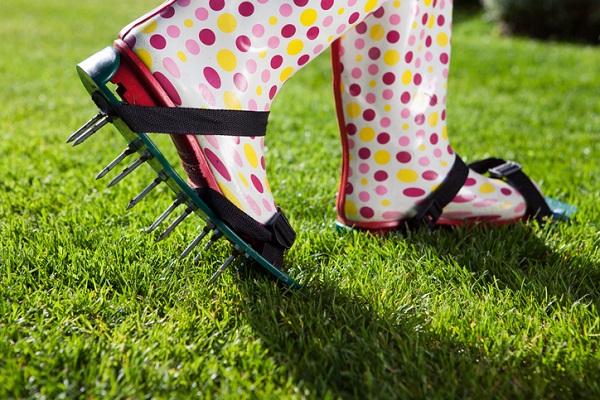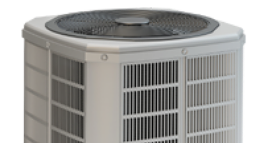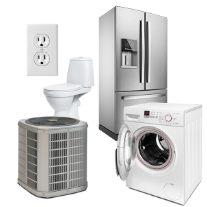A thriving backyard with a beautiful, lush lawn is something nearly every homeowner wants. However, some lawn care practices can hurt the environment (including your other plants), your pets, and even yourself. Luckily, there are plenty of eco-friendly lawn care practices that you can use to care for your lawn. Let’s look at some ways you can make your lawn beautiful without all the harsh chemicals.
Growing an Environmentally Friendly Lawn
It’s entirely possible to grow an environmentally friendly lawn. To start, you want to make sure that you’re using the proper pesticides, herbicides, and fertilizers.
Certain pesticides, herbicides, and synthetic fertilizers are great for getting rid of frustrating lawn pests. Unfortunately, they can also kill important organisms that help promote healthy soil, which leaves your lawn more susceptible to disease and other pests.
For example, pesticides and fertilizers that contain the chemical 2,4-Dichlorophenoxyacetic acid (2,4-D) kill broadleaf plants without harming grass. That’s great for killing common weeds like dandelions.
However, if you have trees and use 2,4-D, you’re likely to kill them, since many trees fall into the broadleaf plant category. It can also kill birds, bees, and other pollinators. Even worse, it you or a pet come into too much contact with it, it can cause illness, including cancer.
If you’re trying to grow your lawn while protecting your trees, pollinators, and family, make sure you aren’t using 2,4-D fertilizers or pesticides.
These chemicals can even end up in lakes and rivers. About 50 million people in the U.S. are drinking water that is likely contaminated with pesticides, according to the US Department of Agriculture.
If you’ve been using chemicals like this, don’t panic. Simply stop using them going forward and consider some more natural, environmentally friendly ways to grow your healthy lawn.

Step 1: Improve Your Lawn’s Soil Health (No Chemicals Required)
One of the most important steps in growing a healthy lawn is improving your soil’s health, whether you’re using warm season grasses or cool season grasses. Soil is your lawn’s foundation and primary source of nutrients.
Improving and maintaining its health will give your lawn’s natural ecosystem a boost. Start by removing dead roots and organic matter buildup, then frequently monitor for weeds and pests.
To promote thick, strong grass blades, you want your soil to be soft and airy. A common problem for grass growers is compacted soil. Soil compaction makes it difficult for grass to take root. That leads to weak root systems and gives weeds more room to grow.
Additionally, when you have healthy soil that allows strong grass growth, it can be one of the best (and most natural) methods of weed control around. Because when you have strong, thick grass, it gives weeds less room to grow.
Step 2: Aerate Your Lawn and Use an Organic Fertilizer Twice a Year
Aerating is so important for growing a healthy lawn, especially in early spring. Properly aerated soil has space for oxygen, water, and nutrients to circulate, which promotes plant growth and can reduce thatch. (Note: It’s OK to have about a half inch of thatch, but any more is too much.)
There are several ways to reduce thatching and give your grass seed a head-start. You can hire a professional, which is likely the most expensive option. However, a professional will likely use a commercial aerator, which often gives excellent results.
If you’re more of a DIYer, you can likely rent an aerator from your local hardware store. You may have difficulty renting them out during prime lawn prep times, so keep that in mind.
And of course, you can always go old-school with a manual, two-prong coring tool or spiked shoes. For larger lawns, this may not be ideal, since it can take a very long time and be a lot of hard work.
Regardless of which method you choose, leave the soil cores on top of your lawn. When they break down, they return nutrients to the soil.
Organic fertilizer is a must for natural lawn care and can be especially helpful if your lawn is recovering from past chemical use. To help promote new growth, look for an organic starter fertilizer at your local home improvement store or nursery.
To best improve your soil’s health, fertilize once in the early spring (between mid-April and early June) and once in the fall (from Labor Day through mid-October). That’s usually enough to keep a lush and vibrant lawn.
Step 3: Mow and Water Your Lawn Properly
Cutting grass too short is one of the most common mistakes homeowners make. Most grasses do best when kept 2–4 inches long, so set your mower’s height high. At this length, moisture levels are more consistent, and you can protect your roots from the hot summer sun.
Consistency is key to help your grass grow naturally. But don’t mow your lawn just because you think it’s time. If you use a gas-powered lawn mower, mowing less frequently is another eco-friendly win.
When you do mow your lawn, consider letting your grass clippings lie. Grass clippings are great sources of nutrients and they can keep your grass cool and moist. Additionally, if your mower has a mulching setting, use that instead of bagging your clippings.
How you water your lawn depends on your climate. If you live in the northwest for example, you’ll likely need to water less frequently than someone who lives in a more arid climate, like the Rocky Mountain region. However, there are some general watering rules to follow.
For example, your lawn needs about one to two inches of water every week to thrive. But you don’t need to spread the water out over the week.
In fact, providing the water all at once is a much better method, as it allows the water to sink in more deeply. That helps create stronger, deeper roots that are more resistant to drought.
Finally, understand your sprinkler system. Different sprinkler systems provide different amounts of water.
For example, an oscillating sprinkler may provide more coverage but will need to run for one to three hours to properly soak the lawn. Alternatively, spot or rotary sprinklers provide much less coverage but soak the area more quickly.

Step 4: Xeriscape
In some places, like the Southwest, turf grass lawns are no longer allowed. In these cases—or if you just want to reduce water consumption—xeriscaping can be an excellent option.
Xeriscaping is landscaping designed for water conservation. You can use different plants, succulents, and trees to bring color and pop to your lawn while being water efficient. In places where water rationing is becoming more common, xeriscaping can be a good solution.
Xeriscaping is much different than zeroscaping. Zeroscaping is when you replace turf with dirt or rocks. While both strategies are good for conserving water, many homeowners who can’t have or don’t want lawns still want something aesthetically pleasing. Xeriscaping is a good answer for that need.
Bonus Tip: Purchase or Renew Your 2-10 HBW Home Service Plan

Where you live plays a big role in the kind of landscaping you’ll do. With the tips above, you can foster a lush green lawn or convert to an eye-catching xeriscape. But one thing that all homeowners will likely go through is an unexpected breakdown to an important system or appliance. That’s where a 2-10 HBW Home Service Plan can come in handy.
A 2-10 HBW Home Service Plan (home warranty) can help you protect your budget and find the right technician when important home items break down from normal wear and tear.
Plus, your 2-10 HBW Home Service Plan gives you access to great perks and programs, like our comprehensive Maintenance Guide and Appliance Discount Program.









